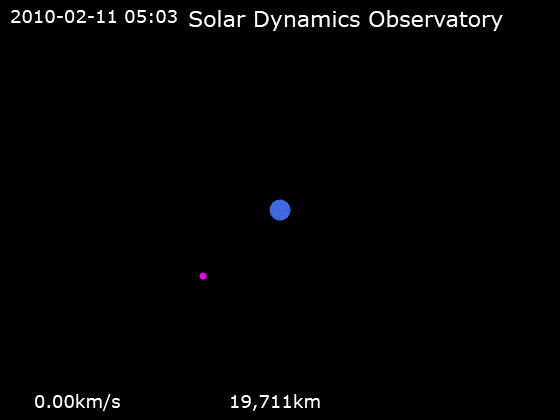Vienna Calling: Strauss's 'The Blue Danube' Waltzes Into Cosmic History as ESA Celebrates 200th Birthday

Johann Strauss II's immortal masterpiece "The Blue Danube" has transcended earthly concert halls to make its journey into the infinite cosmos, marking a historic milestone that bridges classical music heritage with space exploration. On May 31, 2025, the European Space Agency (ESA) successfully transmitted a live performance of the beloved waltz into deep space, commemorating both the composer's 200th birthday and ESA's 50th anniversary in an unprecedented celestial celebration.
The Vienna Symphony Orchestra delivered a specially crafted performance from Vienna's MAK - Museum of Applied Arts, with the music being simultaneously broadcast to audiences in Vienna, Madrid, and New York's Bryant Park. Under the direction of conductor Jan Nast, the orchestra emphasized the waltz's ethereal qualities, performing as if the music itself were floating through the vacuum of space. The digitized sound was transmitted via ESA's 35-meter satellite dish at the Cebreros ground station in Spain, traveling as electromagnetic waves at the speed of light toward interstellar space.
This ambitious project represents more than a musical tribute; it symbolically corrects what many consider a significant cultural oversight. When NASA's Voyager 1 and 2 spacecraft were launched in 1977, they carried Golden Records containing a carefully curated selection of Earth's cultural heritage for potential extraterrestrial discovery. The Golden Record included 27 musical pieces, featuring works by Bach, Beethoven, Mozart's "The Magic Flute," and even Chuck Berry's "Johnny B. Goode," but notably excluded Strauss's famous waltz. Vienna and ESA saw this as a mistake that needed correction in 2025.
The transmission's journey through space follows a precise trajectory that will reach NASA's Voyager 1 spacecraft—currently the most distant human-made object in the universe—in approximately 23 hours and 3 minutes. After surpassing both Voyager probes, the electromagnetic waves carrying "The Blue Danube" will continue their interstellar voyage indefinitely, potentially serving as humanity's musical ambassador to the cosmos.
The event also celebrated ESA's founding 50 years ago, with free public screenings provided in multiple international locations. Josef Aschbacher, ESA's Director General, emphasized the significance of this moment, noting how the waltz has become synonymous with space travel since its prominent use in Stanley Kubrick's 1968 masterpiece "2001: A Space Odyssey." The film's iconic docking sequences, set to Strauss's music, have made "The Blue Danube" what many consider the unofficial anthem of space exploration.
Norbert Kettner, director of the Vienna Tourist Board, highlighted the waltz's unique connection to space exploration, explaining that the piece has been played during various International Space Station docking maneuvers. The music's floating, weightless quality has made it a natural soundtrack for humanity's ventures beyond Earth's atmosphere, embodying the grace and wonder of space travel.
This historic transmission represents a convergence of artistic heritage and technological achievement. The project utilized advanced satellite technology to ensure the musical performance would maintain its integrity during the vast journey through space. The Cebreros ground station, typically used for deep-space communications with various ESA missions, demonstrated its versatility by serving as a cosmic concert hall transmitter.
The significance extends beyond the immediate celebration, as this event establishes a new precedent for cultural space missions. Jan Nast, who curated the hour-long "interstellar concert," emphasized music's universal language and its power to convey hope and joy across any distance. The performance included additional pieces beyond "The Blue Danube," creating a comprehensive Austrian musical journey through space.
Research into the Voyager Golden Records reveals the careful consideration given to representing Earth's cultural diversity. The committee, chaired by Carl Sagan, selected content including natural sounds, musical selections from different cultures and eras, spoken greetings in 59 languages, and printed messages from world leaders. The inclusion of Mozart's "The Magic Flute" from the same Austrian musical tradition makes the absence of "The Blue Danube" particularly notable to cultural historians.
The transmission's timing aligns with growing interest in space exploration and cultural preservation. As humanity expands its presence in space through missions to Mars and beyond, the importance of maintaining cultural connections becomes increasingly relevant. This project demonstrates how space agencies can serve not only scientific but also cultural missions, preserving and sharing humanity's artistic achievements across the cosmos.
The technical achievement of this transmission showcases the precision of modern space communication technology. The electromagnetic waves carrying Strauss's waltz will travel approximately 15 billion miles to reach Voyager 1, maintaining the musical information's integrity throughout this vast journey. This demonstrates remarkable advancement in both space communication technology and cultural preservation methods.
Vienna's role as the cultural center of this celebration reinforces the city's position as a guardian of classical music heritage. The Austrian capital, with its rich musical history spanning centuries, served as the perfect launching point for this cosmic cultural mission. The city's connection to both Strauss and space exploration through popular culture made it an ideal location for this historic event.
The implications of this transmission extend into questions about humanity's cultural legacy in space. As we continue expanding our presence beyond Earth, projects like this establish precedents for how we might preserve and share our cultural heritage with future generations, whether human or potentially extraterrestrial. The success of this mission may inspire similar cultural space transmissions in the future.
This research draws from multiple sources including reports from NBC News, Associated Press, BBC Sky at Night Magazine, and official ESA documentation, providing comprehensive coverage of this unprecedented cultural space mission that bridges classical music heritage with modern space exploration technology.
Advertisement
Tags
Advertisement





